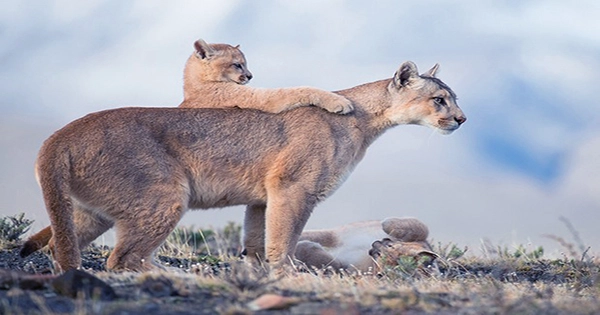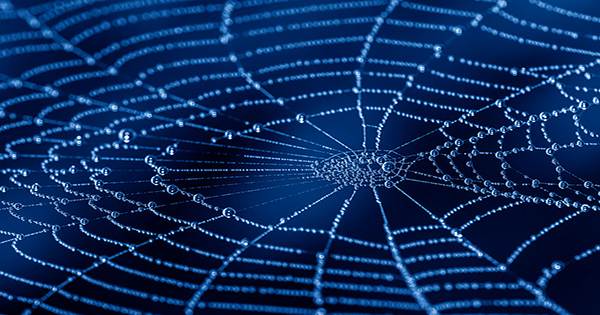Right whales migrate north in the month of June, when winter sets in the southern hemisphere and the seas surrounding Antarctica freeze over. Many of them gather in the bay outside the town of Hermanus in South Africa.
Here, the warmer water from South Africa is ideal for breeding and caring for calf calves. Since there is no food available, right whale mothers must use all of their fat reserves to make milk for their young throughout the whole winter.
Therefore, it is crucial that whales consume a lot of food and gain weight throughout the summer in the chilly seas near the Antarctic. But it seems there is not enough food. The whales arriving at the coasts of South Africa are thinner than they used to be.
This is the outcome of recent Aarhus University research that was presented in the journal Scientific Reports. Right whales have shrunk more and more since researchers began measuring them in the 1980s. Fredrik Christiansen, a senior researcher at the Department of Ecoscience at Aarhus University, who is behind the new results, explains this.
“Right whales are 25 percent thinner than they were in the 1980s. This is bad for the whale population, because it means that the newborn whale calves have a higher risk of dying. Fortunately, the right whales in the Southern Ocean are not endangered, but if this continues, they could become so,” he says.
When the ice melts, food disappears
The cows must survive for several months without food when winter arrives and they swim from the Antarctic to the north. They consume through the fat reserves they had accumulated throughout the comfortable and bright summer months for several months.
Right whales can be seen swimming beneath the sea ice all summer long, opening their jaws to ingest krill, water fleas, and seawater. A sort of massive filter, the baleen in their mouth removes the small animals from the sea water. As a result, the whales can consume large quantities of food without using a lot of energy.
The whales are extremely important for the parts of the sea where there is not much food. When the whales die, their huge bodies sink to the bottom. In the depths, they become food for a whole ecosystem of eel, sharks, crabs, lobsters, worms and microorganisms. So, if the whales disappear, it will have major consequences for many other animals.
Fredrik Christiansen
“But the large shoals of krill are shrinking and this means that the whales can’t fatten up before winter as they used to,” explains Fredrik Christiansen.
“The shoals of krill live on phytoplankton, which thrive best in the cold waters around the Antarctic. Here like plants on land they transform sunlight into energy. Rising sea temperatures mean there is less phytoplankton, fewer krill and thus less food for the whales.”
“Instead, the whales forage for food further north, where there is another and less energy-rich form of krill.”
“Further north, there’s less food for these small crustaceans. Therefore, they’re not as big and fat as the animals living beneath the Antarctic sea ice,” he says.
How to weigh a whale
How exactly do scientists know that the whales have become thinner? Do Fredrik Christiansen and his colleagues lift the huge animals out of the water with oversized weighing scales? No, he explains. Instead, based on images captured by drones, the researchers have developed a way to determine the weight of the whales.
“Right whales like to lie flat on the sea surface. This makes them easy to photograph from above. When the drone has taken some photographs and we know the height of the drone we can calculate the size of the animal,” he explains.
However, in addition to its length and width, the whale’s volume must also be known in order to determine its weight. However, because researchers like Fredrik Christiansen have watched numerous right whales roll around on the water’s surface over the years and have been able to quantify their size, they now understand the correlation between the whales’ length, width, and volume.
“We calculate the volume using the drone photographs and when we know the volume, we more or less know the weight. In this way, we can see that the whales have become thinner over the past 30 years and that’s serious. The weight of the mothers has a huge impact on their calves,” he says.
Small and weak whale calves
“Thirty to forty years ago, the southern right whale had calves every three years on average. But this is no longer true,” explains Fredrik Oscar Christiansen.
“In the 1980s, researchers observed that the right whales off the coast of South Africa gave birth to a new calf every three years. But because it’s now difficult for them to fatten up during summer, this has fallen to every five years. This means that the population is growing significantly more slowly.”
“And not only do the whale calves come more rarely. The calves born today are smaller and grow more slowly.”
“The amount of fat on the whale mother is directly linked to how much energy she can give to her calf through her milk. When the mother is thin, the calf gets less energy and grows more slowly,” he says.
The northern right whales in the waters around Canada and the northern US are not getting as big as they used to, according to the researchers. This may be as a result of the calves being born smaller. A whale born in 2019 will, on average, be one meter shorter when it is fully matured than a whale born in 1981, according to the researchers’ calculations.
“Small calves have a higher risk of dying. They’re more vulnerable if a killer whale attacks,” explains Fredrik Christiansen.
Hunted close to extinction
Because they were thought to be the “right” whales to catch, right whales received their name. The huge whales were violently hunted in both the northern and southern hemispheres of the Atlantic for hundreds of years beginning as early as the 14th century.
Oil from the whales’ fat was one of the most important sources of energy. Train oil, which the oil used to be called, became a fuel in lamps both for indoors and for street lights. The demand for train oil was also one of the most important reasons why Denmark colonized Greenland in the 18th century.
Around 1900, train oil was replaced by another more efficient energy source: crude oil. Because of the subsurface flow of “black gold,” whale hunting was no longer profitable.
One of the animals that benefited from the end of whaling is the southern right whale. The population has been let to regain its former size and health for more than 100 years. And the entire Southern Ocean ecosystem will benefit from this, not just the whales.
Because the whales bring nourishment to areas of the sea with little food.
Extremely important for the marine ecosystem
More life than any other sea on the earth can be found in the waters surrounding the Antarctic, where right whales congregate to feed. Only 5% of the ocean on Earth’s surface is in this region, but it is home to 20% of the world’s marine biodiversity.
The numerous summertime hours of sunshine, the choppy sea currents, and the cool temperature are ideal for teeming life.
The light makes marine algae grow explosively. The algae and food are circulated by the marine currents so that krill and plankton can gorge themselves. The tiny crustaceans reproduce when they are full, creating enormous swarms. There could be up to 35,000 krill in one cubic meter of water in some areas.
Many creatures, including right whales, gorge themselves on the plentiful krill, but unlike many other species, whales move thousands of kilometers north to spend the winter.
“The whales are extremely important for the parts of the sea where there is not much food. When the whales die, their huge bodies sink to the bottom. In the depths, they become food for a whole ecosystem of eel, sharks, crabs, lobsters, worms and microorganisms,” says Fredrik Christiansen. “So, if the whales disappear, it will have major consequences for many other animals.”
“The whales are an apex predator. When an animal at the top of the food chain disappears, it has a cascade effect. Animals throughout the food chain will be affected if the whales are no longer there. From sharks to bacteria,” he concludes.
















